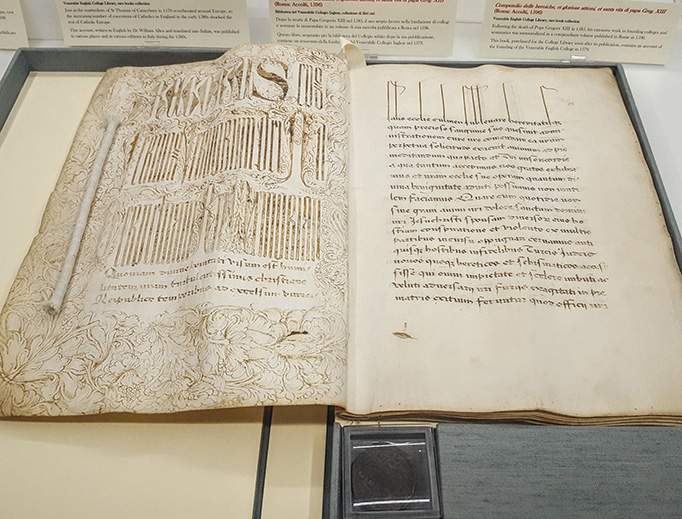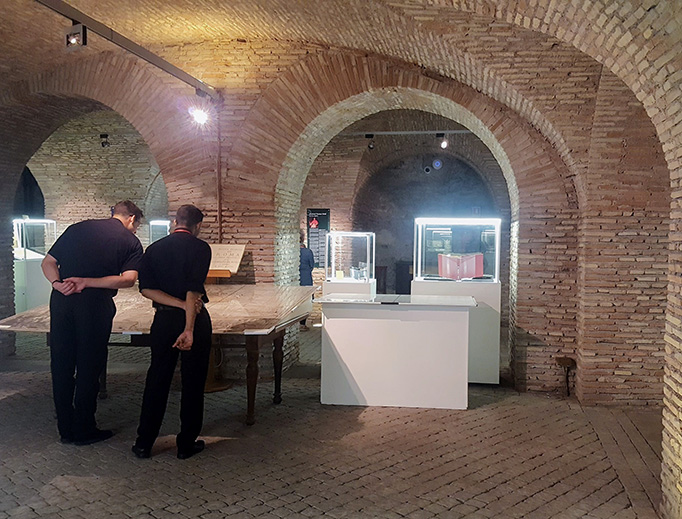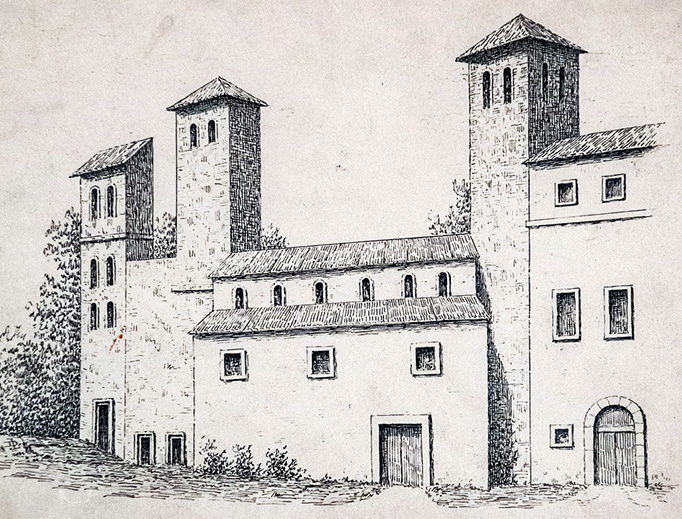British History Travels Back to Rome
This was the first time the artifacts have been gathered together in one place after being smuggled out of Rome in the 1580s.

A long history of pilgrims pursuing Rome is never-ending. There are many stories, known and unknown to us.
The Venerable English College, VEC, the Catholic seminary of England and Wales, brought their history of more than 650 years to life at the exhibit, “Memory, Martyrs and Mission.”
The exhibit was put together to celebrate three important anniversaries for the college; 900 years since St. Thomas of Canterbury's birth, 450 years since the foundation of the first English seminary at Douai, and 200 years since the re-opening of the VEC after the French invasion of Rome.
Over 30 artifacts, in care of Stonyhurst College and the British Jesuit Province, traveled to Rome for the first time in over one hundred years.
The exhibit is encountering the human stories from history, Jan Graffius explained, exhibit curator. “The objects themselves reflect the development of the character of Catholicism and Catholicism from England.”
The title of the exhibit reflects that as well. “Memory,” to remember the key aspects of that history, “Martyrs,” to recognize those who were closely associated with that history, and “Mission,” to highlight the missionary work over the centuries.
The history dates back to 1362 when the English Hospice opened up to pilgrims from England and Wales desiring to visit and study in Rome, a tradition that continues today. The College comprises of 40 students and staff, cultivating both the English and Welsh traditions.
Life wasn’t easy after settling in Rome. Catholics were harshly penalized during the reign of Elizabeth I from 1558-1603. Due to this, a new English College at Douai formed to educate and train priests for their work as missionaries in a Protestant domain.
During this time, 44 members of the VEC were martyred out of 600 Catholics who were executed. Among them include Saint Richard Reynolds, one of the four hanged by Henry VIII’s regime, and Saint Edmund Campion, hanged for doing underground ministry during the Elizabethan anti-papal rage.
“Beautifully done,” said Fr. Mark Cassidy, spiritual director of the Pontifical Scots College, sister college to the VEC. “Even though we don’t share the great martyrdom history, it was interesting to see the history coincide, with similar events in terms of life in Rome.”
This was the first time the artifacts were gathered together in one place after being smuggled out of Rome in the 1580s.
Included are relics, paintings, silver, writings, and photos that paint a picture of the Catholic and spiritual elements of the Church. Most visitors commented on how the exhibit gave a much broader view of the faith in England and revealed the cultural wealth of English Catholics some may not have been aware of.
“The hardest part when putting the exhibit together was what not to include,” Graffius said. “We had to be disciplined in the number of stories we wanted to tell.”
Some fear that English Catholics are not well illuminated and overlooked.
Maurice Whitehead, current Schwarzenbach Research Fellow at the VEC and a Research Fellow at the British School at Rome, expressed how the international education of England and Wales have been taught one-sided, especially in its representation to the papacy.
“The exhibition and archives show another side of the picture much less well-known,” Whitehead said.
He has been responsible for conserving, cataloguing and digitizing the oldest Britain archival collection outside of Britain for the past three years at the VEC.
The collection consists of architectural records, pilgrim records, financial records, medical records, musical history, theatre scripts and photographs.
“We’ve just scratched the surface,” Whitehead said, acknowledging the meticulous work.
The archives also include the relationship with North America from 1821-35 when the Rectors of the English College aided the dioceses of Baltimore, Philadelphia and Quebec, representing the Vatican in helping the bishops develop the Church.
With this rich, multidimensional archive, Whitehead’s task is to highlight the potentiality. With the help of financial resources, the VEC hopes to open an important center for the study of ecclesiastical and British and Welsh history available to scholars and a wider public, as well as helping the institution better understand themselves.
Although the exhibit has officially closed due to logistics in extending the exportation of cultural artifacts overseas, the VEC has already began to put together an illustrated book with photos of all the objects.
The VEC has been a known as a place of “survival during the face of adversity,” which offers a powerful upbringing to the Catholics of the 21st century facing today’s challenges and mission.
















